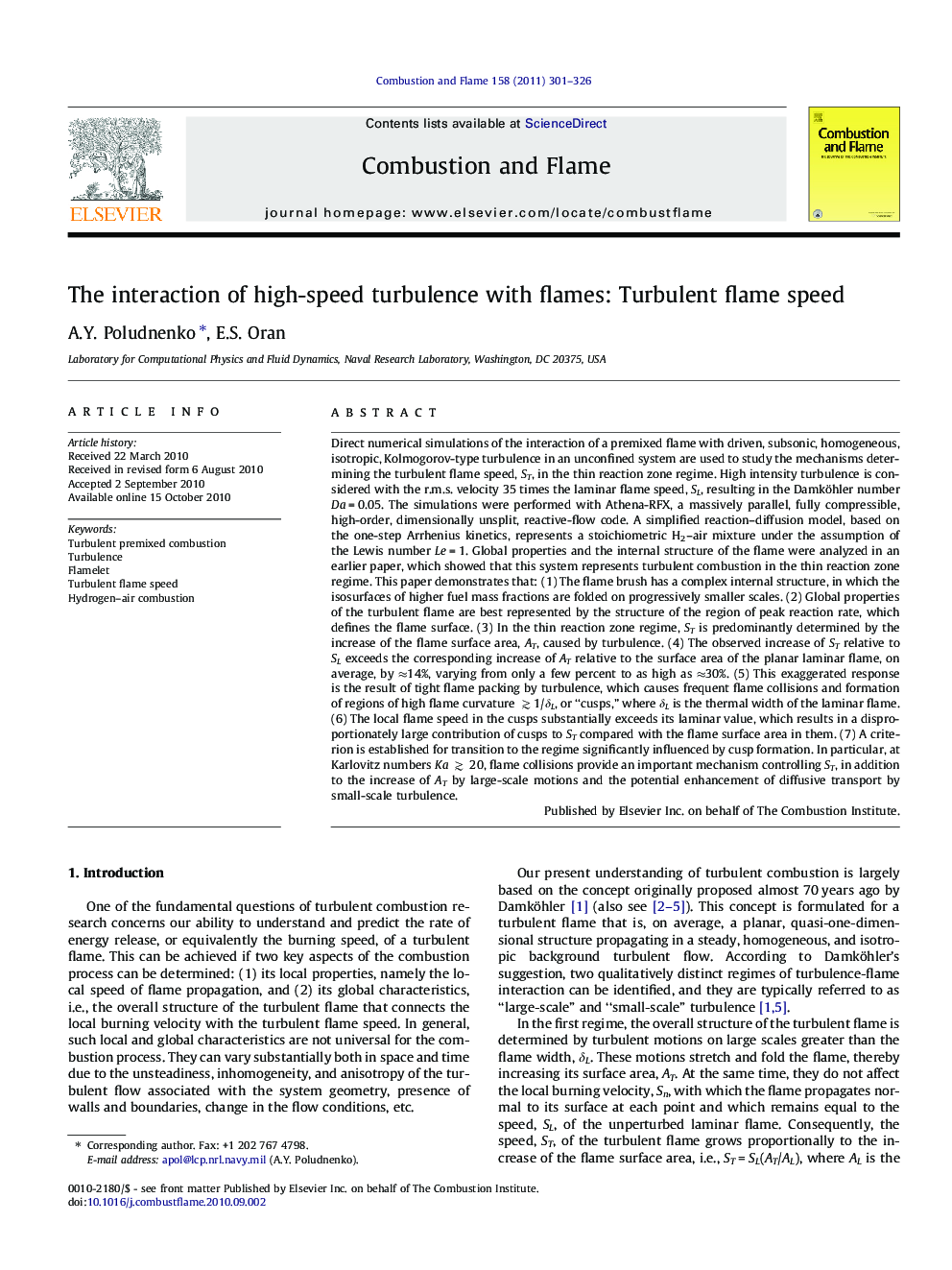| کد مقاله | کد نشریه | سال انتشار | مقاله انگلیسی | نسخه تمام متن |
|---|---|---|---|---|
| 169508 | 458012 | 2011 | 26 صفحه PDF | دانلود رایگان |

Direct numerical simulations of the interaction of a premixed flame with driven, subsonic, homogeneous, isotropic, Kolmogorov-type turbulence in an unconfined system are used to study the mechanisms determining the turbulent flame speed, ST, in the thin reaction zone regime. High intensity turbulence is considered with the r.m.s. velocity 35 times the laminar flame speed, SL, resulting in the Damköhler number Da = 0.05. The simulations were performed with Athena-RFX, a massively parallel, fully compressible, high-order, dimensionally unsplit, reactive-flow code. A simplified reaction–diffusion model, based on the one-step Arrhenius kinetics, represents a stoichiometric H2–air mixture under the assumption of the Lewis number Le = 1. Global properties and the internal structure of the flame were analyzed in an earlier paper, which showed that this system represents turbulent combustion in the thin reaction zone regime. This paper demonstrates that: (1) The flame brush has a complex internal structure, in which the isosurfaces of higher fuel mass fractions are folded on progressively smaller scales. (2) Global properties of the turbulent flame are best represented by the structure of the region of peak reaction rate, which defines the flame surface. (3) In the thin reaction zone regime, ST is predominantly determined by the increase of the flame surface area, AT, caused by turbulence. (4) The observed increase of ST relative to SL exceeds the corresponding increase of AT relative to the surface area of the planar laminar flame, on average, by ≈14%, varying from only a few percent to as high as ≈30%. (5) This exaggerated response is the result of tight flame packing by turbulence, which causes frequent flame collisions and formation of regions of high flame curvature ≳1/δL, or “cusps,” where δL is the thermal width of the laminar flame. (6) The local flame speed in the cusps substantially exceeds its laminar value, which results in a disproportionately large contribution of cusps to ST compared with the flame surface area in them. (7) A criterion is established for transition to the regime significantly influenced by cusp formation. In particular, at Karlovitz numbers Ka ≳ 20, flame collisions provide an important mechanism controlling ST, in addition to the increase of AT by large-scale motions and the potential enhancement of diffusive transport by small-scale turbulence.
Journal: Combustion and Flame - Volume 158, Issue 2, February 2011, Pages 301–326